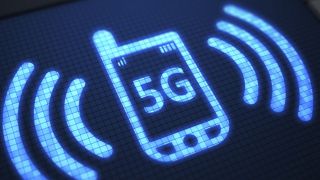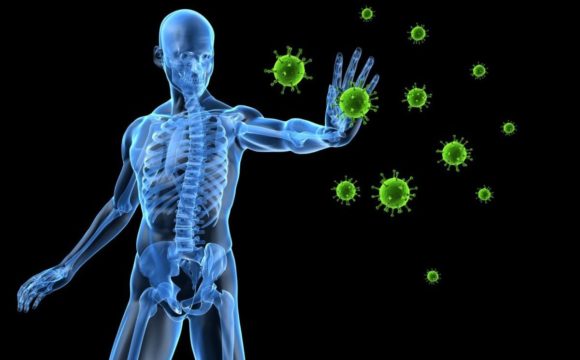5G (“5th Generation”) is the upcoming generation of cellular mobile communications. It is designed to deliver faster connectivity and response time. This new generation of high frequency, but even shorter wavelengths, is being proposed to power the Internet of Things (IoT). Features like improved speed and latency of this network would enable the creation of smart cities, remote surgeries, and super-fast downloads, among countless other functionalities.

Previous ‘G’ networks made use of frequencies between 700 MHz and 6 GHz. 5G is said to have frequency bands in the range of 600-700 MHz, 3-4 GHz, 26-28 GHz and 38-42 GHz. A significant addition to capacity compared to the current mobile technologies, this means it can accommodate more users, more data and faster connections. The increased spectrum in the millimetre wave (MMV) band above 30 GHz can be used to provide localised coverage.
But it is argued that the addition of this added high-frequency 5G radiation to an already complex mix of lower frequencies (2G, 3G, 4G) will contribute to a negative public health outcome from both physical and mental health perspectives.
The question is, why and how?
Living organisms at all levels are affected by exposure to electromagnetic fields (EMFs) produced by smartphone devices and transmission towers. The shorter length millimetre waves (MMV) used in 5G technology cannot travel far, a large number of cell towers and antennas will have to be set up at short ranges. This means increased exposure to radiofrequency radiation (RF).
Radiofrequency radiation (RF) or simply radio waves, is being deemed as a new form of environmental pollution. Over the years, several studies have been conducted on the health implications of EMF generated by electric and wireless devices. They state the possible effects like increased cancer risk, cellular stress, rise in harmful free radicals, genetic damages, structural and functional changes of the reproductive system, learning and memory deficits, neurological disorders, and negative impacts on the general well-being in humans. RF-EMF (radiofrequency electromagnetic fields) promote oxidative stress, a condition involved in the inception of cancer, in several acute and chronic diseases. The cancer agency of the World Health Organization (WHO), namely, International Agency for Research on Cancer (IARC) concluded (in 2011), that mobile phones and other devices that emit similar nonionizing electromagnetic field (EMF) radiation in the frequency range 30 kHz–300 GHz are possibly carcinogenic to humans (Group 2B). Current researches of wireless frequencies in the millimetre and submillimetre range confirm that these waves interact directly with human skin, specifically the sweat glands.

The current ICNIRP (International Commission on Non-Ionizing Radiation Protection) / WHO guidelines for EMF are based on the hypothesis that “The critical effect of RF-EMF exposure relevant to human health and safety is heating of exposed tissue. This is obsolete now since scientists have proven that many different kinds of illnesses and harms are caused without heating (“non-thermal effect”) at radiation levels well below ICNIRP guidelines.
This led to more than 180 scientists and doctors from 36 countries to issue a warning about the danger of 5G and appeal to the European Union, in 2017. “We, the undersigned scientists, recommend a moratorium on the roll-out of the fifth generation, 5G, for telecommunication until potential hazards for human health and the environment have been fully investigated by scientists independent from industry”. They also appealed to the UN Secretary General in 2018. In November 2018, the National Toxicology Program released the final results of the study on cell phones and cancer, which stated “some evidence” of a link to cancer, at least in male rats. However, the study only focused on the risks associated with 2G and 3G cell phones.
The US Senate Commerce, Science, and Transportation Committee hearing in February 2019, concluded that ‘No studies show 5G is safe’.
References:
- https://www.jrseco.com/european-union-5g-appeal-scientists-warn-of-potential-serious-health-effects-of-5g/
- https://ehtrust.org/key-issues/cell-phoneswireless/5g-networks-iot-scientific-overview-human-health-risks/
- https://www.dw.com/cda/en/5g-networks-are-they-dangerous-to-our-health/a-47981285
- https://www.radiationhealthrisks.com/5g-cell-towers-dangerous/
- http://www.emfexplained.info/site/misc/emf/downloads/5G&EMF_Explained_May2018_Final.pdf
- https://www.euronews.com/2019/03/26/what-are-the-health-risks-associated-with-a-5g-network
- https://www.ncbi.nlm.nih.gov/pubmed/29402696
- https://www.sciencedirect.com/science/article/pii/S0013935118300161?via%3Dihub
- https://www.5gappeal.eu/category/news-articles/
- https://takebackyourpower.net/senate-hearing-wireless-industry-confesses-no-studies-showing-5g-safety/










